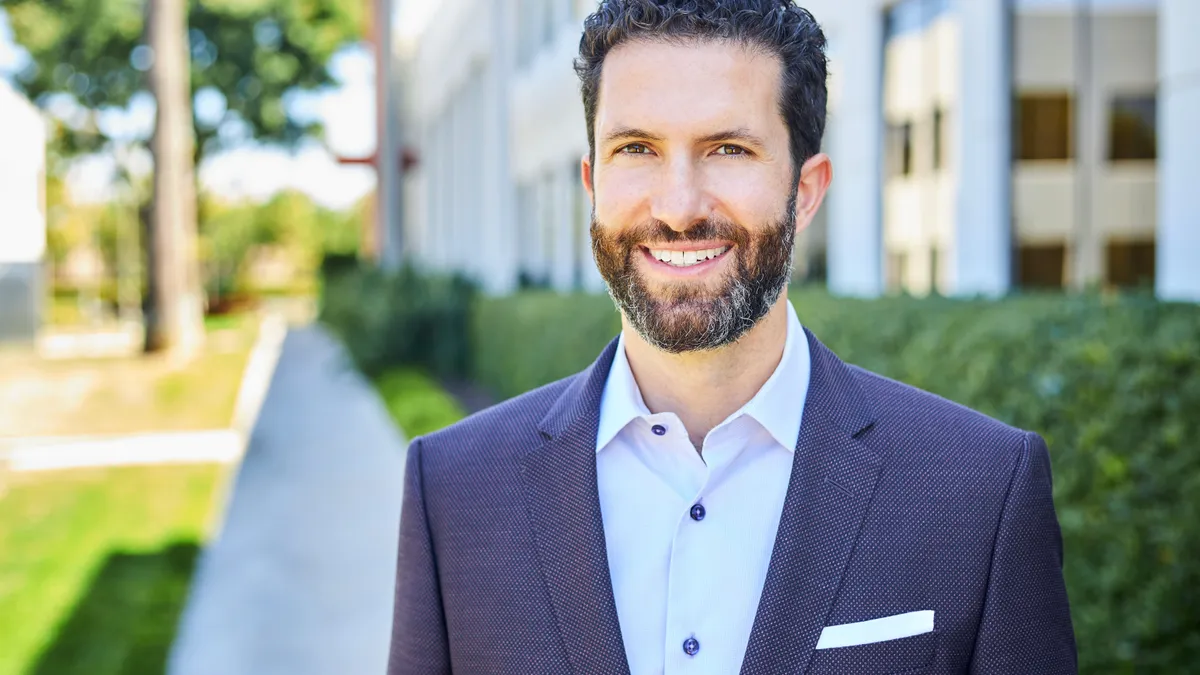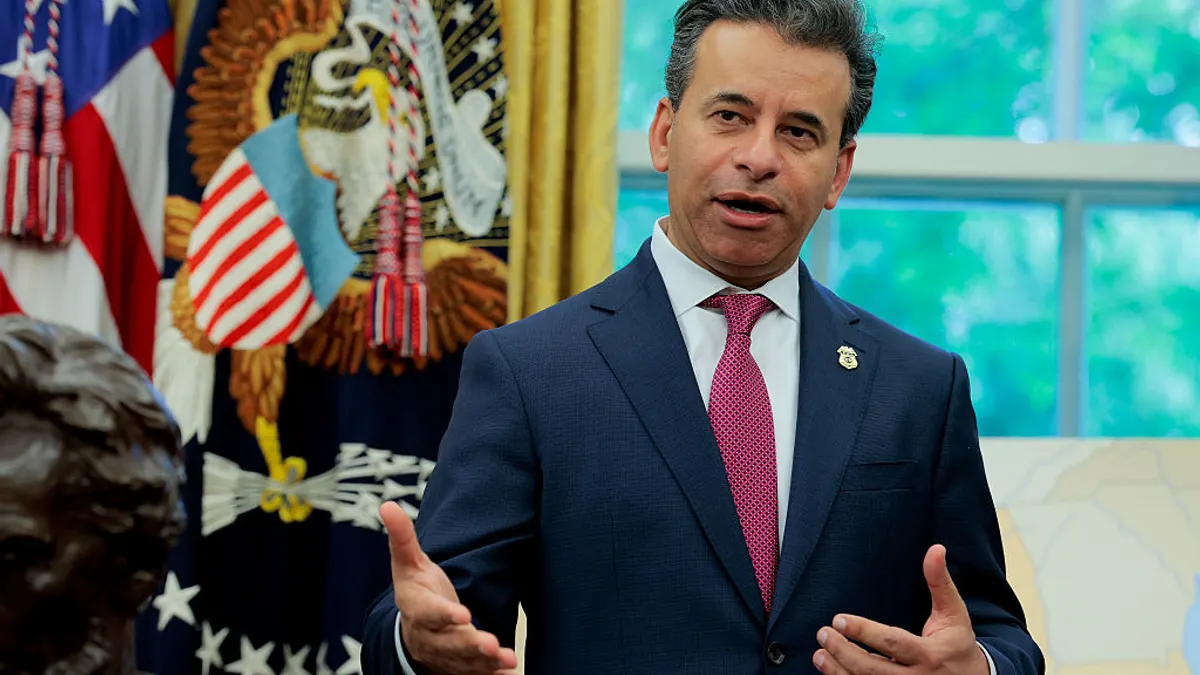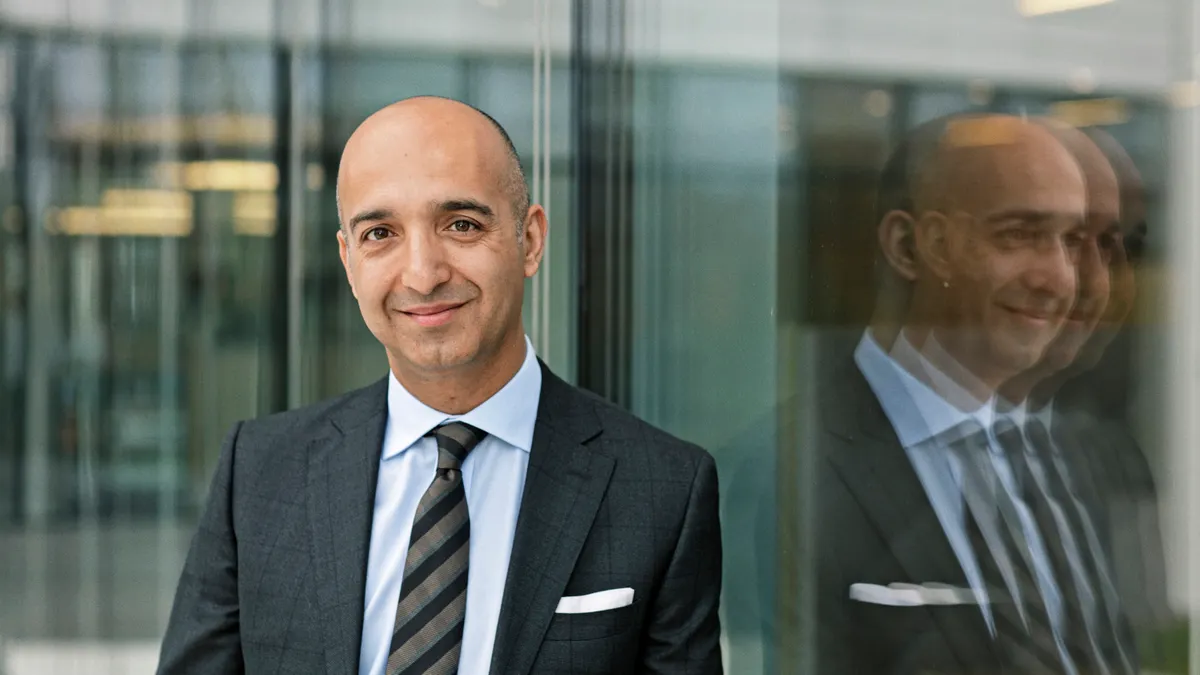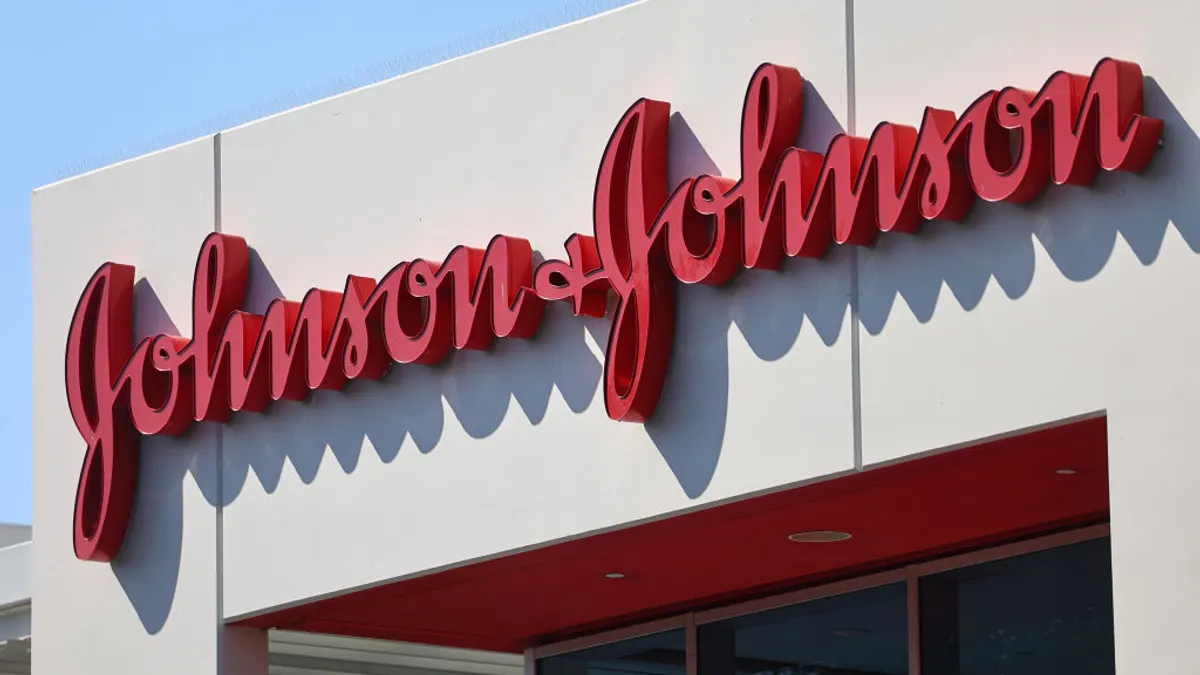Patients with the eyelid disease demodex blepharitis frequently follow a similar treatment journey — one Dr. Bobak Azamian, CEO of Tarsus Pharmaceuticals, witnessed up close when his mother started having problems with her eyes.
It all started with a stye, a common and painful red bump on the eyelid. After a round of antibiotics and over-the-counter meds, some symptoms persisted. For many patients the story would have ended there, without a clear diagnosis or options for further treatment. But it just so happened Tarsus was closing in on an approval for Xdemvy, the first-ever drug for demodex blepharitis, the root cause of demodex mites that can fester in eye lashes.
Sure enough, Azamian’s own mother was ultimately diagnosed with the condition. After Xdemvy got the FDA nod July 25 last year, she became an early patient prescribed a six-week course of the medication.
“My mom’s case is seared in my mind,” Azamian said. “The No. 1 challenge with demodex blepharitis is that a lot of patients aren’t diagnosed.”
Xdemvy marked a breakthrough for the indication and for Tarsus as its first drug to cross the regulatory finish line. But as a first-in-class therapy in a disease category with low diagnosis rates and no other treatments, it also presented the company, headed by a physician CEO who’d never led a product launch in pharma, with commercialization challenges. To get the drug into the hands of an estimated patient population that includes 25 million Americans, the company had to blaze its own trail.
"We are creating this market, so we are launching and educating at the same time."

Dr. Bobak Azamian
CEO, Tarsus Pharmaceuticals
So far, the strategy, which includes a mix of educational campaigns and direct doctor outreach by a growing sales force, has paid off. In its latest earnings update, Tarsus reported fourth quarter revenue north of $13 million — exceeding forecasts of $7 million — and total year sales for Xdemvy of $14.7 million.
The company is also busy in the clinic studying Xdemvy for meibomian gland dysfunction, another eye condition with no other FDA-approved treatments that, coincidentally, Azamian’s mom was also diagnosed with. Tarsus is also testing another treatment, TP-05, as a Lyme disease prophylactic and TP-04, a potential therapy for rosacea.
“The connection between these indications is a unique molecule called lotilaner with the chemistry of an antiparasitic treatment,” Azamian said. “It’s part of a new class of safe and effective medicines that inhibit gamma-aminobutyric acid-gated chloride channels.”
And although the treatments in the company’s pipeline are based on Tarsus’ antiparasitic technology, Azamian said the long-term goal is to mature into an ophthalmology focused company and tap into a global market Market Research predicts will be worth $61 billion by 2028.
For now though, Tarsus has to execute on its Xdemvy launch. Here, Azamian, a 2022 PharmaVoice 100, discusses the company’s commercialization strategies, unforeseen challenges and how the company is leveraging tech along the way.
This interview has been edited for brevity and style.
PHARMAVOICE: What has been your broad commercialization strategy with this new drug in a new market?
DR. BOBAK AZAMIAN: We are doing all the commercialization efforts in house. What we realized is that we are creating a new category, and we need to have a high-touch approach.
We needed to create a pharmacy channel that makes it easy for patients to get the treatment, and we’ve [got it at] four pharmacies that deliver, including CVS and Walgreens. Doctors have to know about it too and do prior authorizations. So that’s been a success so far.
And obviously the sales rep is the customer-facing part of our operation. We [have] reps for each territory, which feeds back into the marketing and commercialization efforts. In hindsight this has been the right decision.
There’s been a lot of talk in the industry about on-the-ground sales forces shrinking, but your sales staff grew 183% last year. Why has this part of the strategy been so important for launching Xdemvy?
The eye care space is different — eye doctors like the one-on-one interactions. So we have 85 reps calling on thousands of doctors, and [they] are considering whether to call on them more frequently because the more we can get in front of them and ask about examining eyelids, the more we hear they didn’t realize there were that many patients [with this condition], and they want to give patients a good solution.
Our target is 15,000 doctors and we’ve already worked with 6,000 doctors. And now that many patients have completed six weeks on the medication, doctors are seeing results and prescribing it more because they see it works.
But we know [reaching] the next 9,000 doctors is going to be more work.
You’ve said building awareness of the disease is the foundation of that approach. Tell me about the campaigns you’re launching to help with that.
We are creating this market, so we are launching and educating at the same time.
We’ve had four campaigns that have all been very action oriented. First, we launched an unbranded campaign around looking at the eyelids and having doctors not just think about the drug but look at the patients for this condition. We also have a branded campaign for doctors called ‘Might over Mites.’
[Before Xdemvy was approved] we had a consumer campaign called ‘Don’t freak out. Get checked out,’ to help educate the public.
And we hosted a live event on social media to launch our branded consumer campaign called the ‘Mite Party’ that destigmatizes the disease to encourage patients to know what’s going on with their eye and to go see their doctors. A lot of education is necessary for consumers so they can connect [symptoms] to the disease and are not afraid to talk about it.
Are you planning a direct-to-consumer sales approach?
We’ve decided to educate doctors and patients first, get payers on board, and then we’ll explore direct-to-consumer. I think our best case for that would be 2025, if we see a need and opportunity.
What unforeseen challenges have you encountered during this launch?
This is a defined course of treatment, so patients don’t go away with a bunch of refills — it delivers a strong value in six weeks. So every prescription matters and we have to make sure patients get those prescriptions. It means we have to take a high-touch approach with the doctor, patient and the payer.
Are you leveraging any emerging commercialization technologies for this launch?
We have an analytics team that’s developed tools for two different areas of data that have been helpful — mapping out which 15,000 doctors we should call on. There are about 60,000 eye doctors in America and we want to find the ones [who] are serving the right patients … and which doctors have prescribed other medicines for the front of the eye.
The other is a real-time data set we get through our warehouse that tracks the flow of the product. That’s a concept companies are using so you can see which doctors are prescribing and how insurance companies are covering the drug and how pharmacies are doing with dispensing it. With any launch, market access is one of the major challenges in the first six months, so it’s helped us understand how pharmacies are performing and how we can get it to patients more efficiently.
We are also exploring the use of an AI tool down the road that could help with remote diagnosis.
Any advice for your peers in the industry on handling this kind of launch?
I don’t know that our recipe works for everybody — it’s not one size fits all. [But for us, it’s been about] thinking about the audience you’re in and how you’re serving your customer — the patient, the doctor and the payer. And be out there with each audience.
Also, hire people who know more than you. As a CEO, be curious as you lead this effort. Have a service mentality and then get out there to work with the customer and your team.
Editor’s note: Nominations for the 2024 PharmaVoice 100 are open. Know a standout leader in the life sciences who’d be a good fit? Let us know using our nomination form by May 5.





















